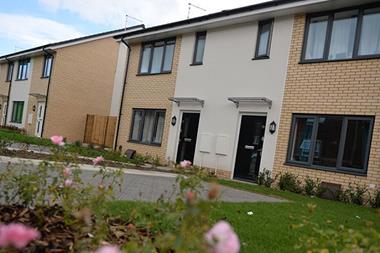CBRE research predicts that London’s population is set to rise by 12% over the next decade.

Addressing the inevitable supply/demand imbalance that this will cause must remain at the top of policymakers’ and housebuilders’ agendas, but simultaneously we must build long-lasting homes and neighbourhoods that will meet the needs of the next generation of Londoners.
Good transport links go hand in hand with successful placemaking. New transport connections open up areas that were previously inaccessible and unsuitable for development, unlocking land to create new neighbourhoods. Infrastructure is essential for driving large-scale regeneration, helping to facilitate new homes, schools, jobs, public realm and amenities.
Accessibility also contributes to overall social wellbeing. It allows friends and families to connect, as well as encouraging new interactions, which can help form communities. Good transport connections make commuting easier and open up new areas for retail and commercial development, driving jobs and economic growth. As we continue to welcome new residents and visitors from all over the world, it is important we provide the infrastructure needed to make London a truly global city.
Sustainability is also a major consideration for the future of housing. Buildings are large entities and have a significant impact upon the environment, consuming large amounts of physical material and energy resources in their construction, maintenance and use. Ensuring that we build new homes that have a positive effect on the environment and are sustainable for future generations is our responsibility today. CBRE’s recent Wellness report considers how developers can incorporate environmentally friendly technologies and energy-saving initiatives into new homes, reducing our carbon footprints and helping to maximise lifespan.
Ensuring we build sustainable homes is our responsibility today
Low-energy heating, cooling, lighting and waste recycling facilities will increase efficiency while reducing energy consumption and costs. Outside the home, green open spaces, community gardens and allotments that promote local food production will also promote sustainability, and landscaping and planting have been shown to reduce pollutant levels.
Some developers are already incorporating facilities that encourage environmentally responsible behaviour. Barratt London’s Fulham Reach development, for example, offers residents access to car charging points. Meanwhile, initiatives such as Passivhaus, a fabric-first approach to buildings aiming to reduce overall energy consumption and improve the quality of life in buildings, are helping to create new, forward-thinking standards that will contribute to the future of sustainable housebuilding.
Recent figures demonstrate that there has been a significant rise in the number of young people living at home with their parents, much of which is attributed to unaffordable housing. According to CBRE research on the UK millennial generation, 47% of those living with their parents expect to move into rented accommodation once they leave home, citing affordability as the main reason.
As the supply/demand imbalance continues to drive house price growth, the build-to-rent (BTR) sector will play a major role in bridging the supply gap for the next generation, acting as a conduit to providing volume accommodation across all tenures. It is estimated that 5.3 million households live in the private rented sector and that figure is expected to rise. Not only does BTR provide viable housing for the future; it provides an attractive investment opportunity for both institutional and private operators and we anticipate that there will be significant activity in this emerging alternative housing model.





























No comments yet